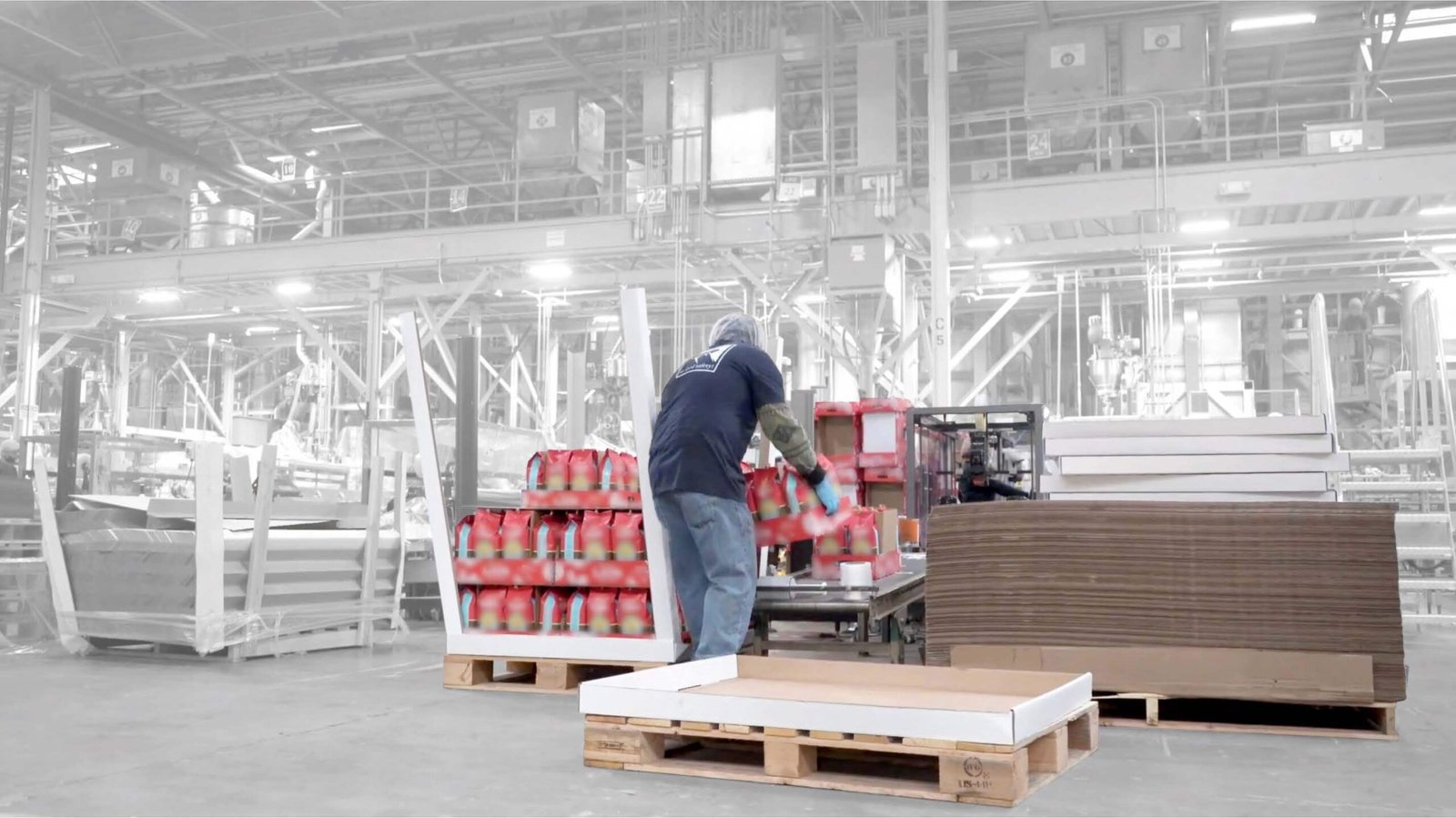Palletizing is a critical process in industries worldwide where products are stacked and secured on pallets for shipping or storage. While automation is becoming more common, manual palletizing—where workers perform these tasks by hand—remains common, especially in the warehousing and manufacturing industries.
However, this widespread practice poses health and safety risks that cannot be ignored. In this article, we’ll explore the risks associated with manual palletizing and discuss strategies to mitigate them to ensure a safer workplace.
Risks of manual palletizing
Manual palletizing involves workers physically handling products, exposing them to various risks of injury. The repetitive nature of this work, combined with the potential for heavy lifting and awkward posture, makes it a primary contributor to ergonomic workplace injuries.
Common risk factors
- Awkward attitudes: Bending, twisting and other unnatural positions can lead to strains and sprains.
- Repetitive movements: Frequent reaching, lifting and carrying increases the risk of musculoskeletal disorders (MSDs).
- Power Effort: Lifting or carrying heavy loads can cause overuse injuries.
- Pressure points: Handling cartons or leaning on hard surfaces may cause discomfort or injury.
- Static positions: Holding fixed positions for a long time can lead to fatigue and problems with the musculoskeletal system.
Palletizing operations can lead to stress, fatigue, anxiety, and other reactions that increase the risk of musculoskeletal disorders (MSDs).
Personal risk factors such as previous medical history, physical capacity, lifestyle and habits such as smoking and lack of exercise can also contribute to injuries.
These MSDs result in reduced quality of life, chronic disability, psychological distress for workers, increased absenteeism, turnover and insurance premiums for employers.
Injury statistics
In the United States, manual material handling, including palletizing, is a significant problem. According to the US Bureau of Labor Statistics (BLS) and OSHA, industries that rely heavily on manual handling experience higher worker injury rates.
In 2023, musculoskeletal disorders accounted for a substantial proportion of work-related injuries, with 266,530 cases involving days away from work in 2022 alone.
Risk mitigation strategies
Mitigating the risks associated with manual palletizing requires a comprehensive approach that goes beyond standard lifting weight limits.
Evaluate and analyze lifting processes
Use tools such as NIOSH Lift Limit Equation and the Composite Lifting Index (CLI) to assess the cumulative physical demands placed on workers. These tools help industrial and safety engineers create effective prevention plans.
Hierarchy of controls for MSD
- Eliminate hazards at the source: The most effective way to reduce risks is to completely eliminate the hazard.
- Palletizing machine: Implementing automated systems removes workers from the most physically demanding tasks, significantly reducing the risk of strains, sprains and MSDs.
Engage engineering teams
By involving technical teams in the risk assessment and mitigation process, you can ensure that the most appropriate and effective security measures are implemented. This proactive approach not only improves worker safety, but also contributes to a healthier and more productive work environment.
Palletizing solution
Adopting semi-automated and fully automated palletizing solutions can significantly reduce the risks associated with manual palletizing by leveraging technology to handle repetitive and laborious tasks.
Semi-automatic palletizing
Semi-automatic palletizing systems require some level of human interaction, such as supervision or management of equipment, while machinery does most of the physical work.
This approach offers greater efficiency compared to manual methods, allowing workers to focus on more complex tasks and reducing the incidence of repetitive strain injuries. Semi-automated systems often include robotic arms or automated conveyors to assist with stacking and palletizing without fully eliminating the need for human operators.
Fully automatic palletizing
Fully automated palletizing solutions minimize human involvement using advanced robotics that autonomously handle the entire palletizing process. These robotic palletizers include a wide range of solutions.
Automation is no longer reserved for large industrial manufacturers. Automated palletizing is now possible with affordable collaborative robots. Agile, easy to use and programmable, using a very small footprint, collaborative robotic palletizers are widely seen in small to mid-sized manufacturers.
Replacing manual labor with robotic palletizers not only increases workplace safety, but also improves operational efficiency, reduces the possibility of human error and the risk of workplace injury.
Palletizing automation allows valuable employees to do more and grow within the company. A robotic palletizer reduces dependence on hard-to-find labor and eliminates jobs that no one wants to do.
Conclusion
Manual palletizing, although necessary in many industries, is labor intensive and poses significant health and safety risks to workers. By understanding injury risks and implementing comprehensive strategies to mitigate them, businesses can protect their workforce and improve operational efficiency.
Engage your technical teams and explore the potential of automated solutions to ensure a safer future for all employees. Prioritize safety today and reap the benefits of a healthier workplace tomorrow.



